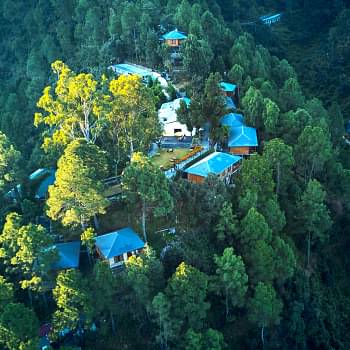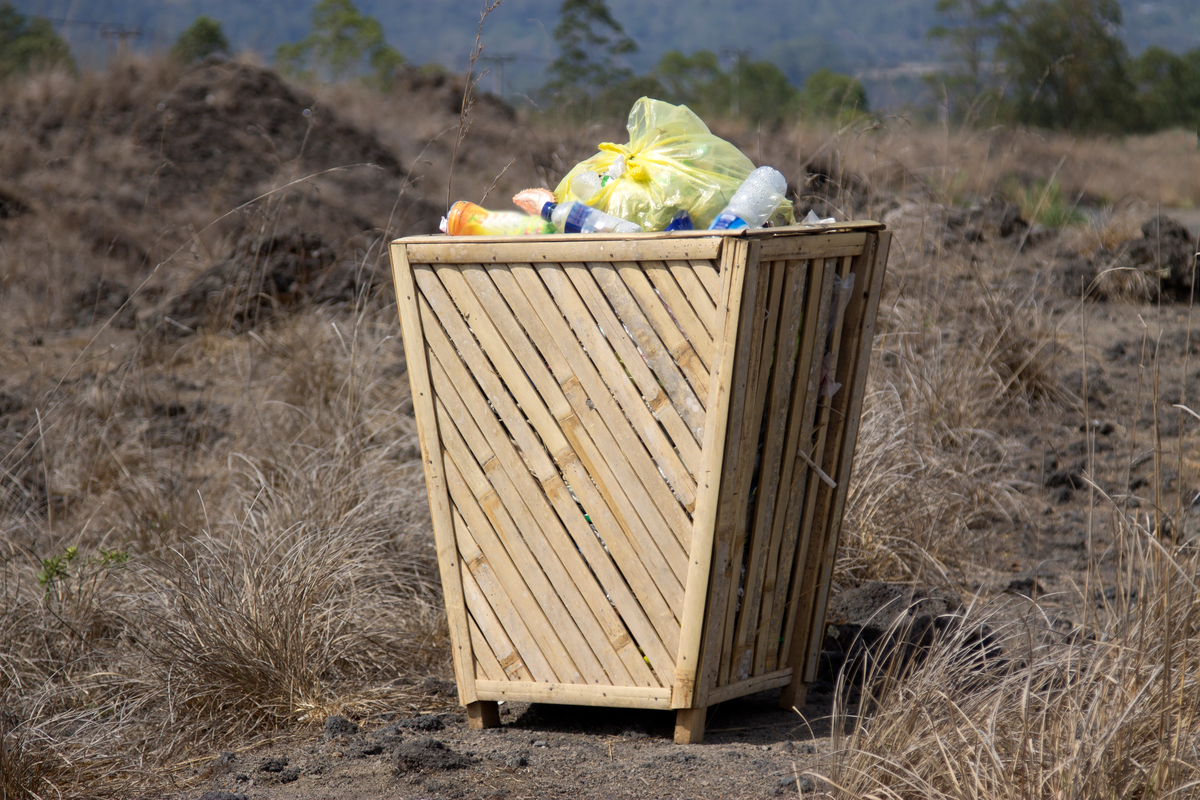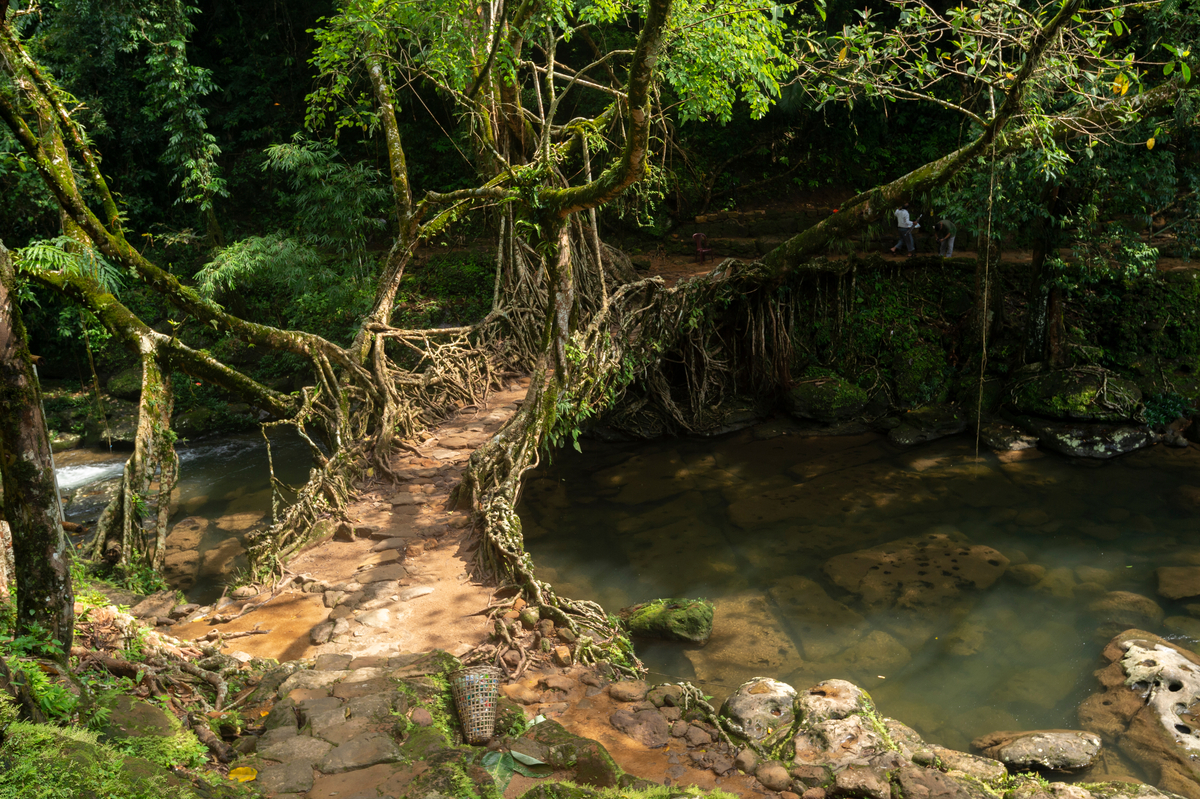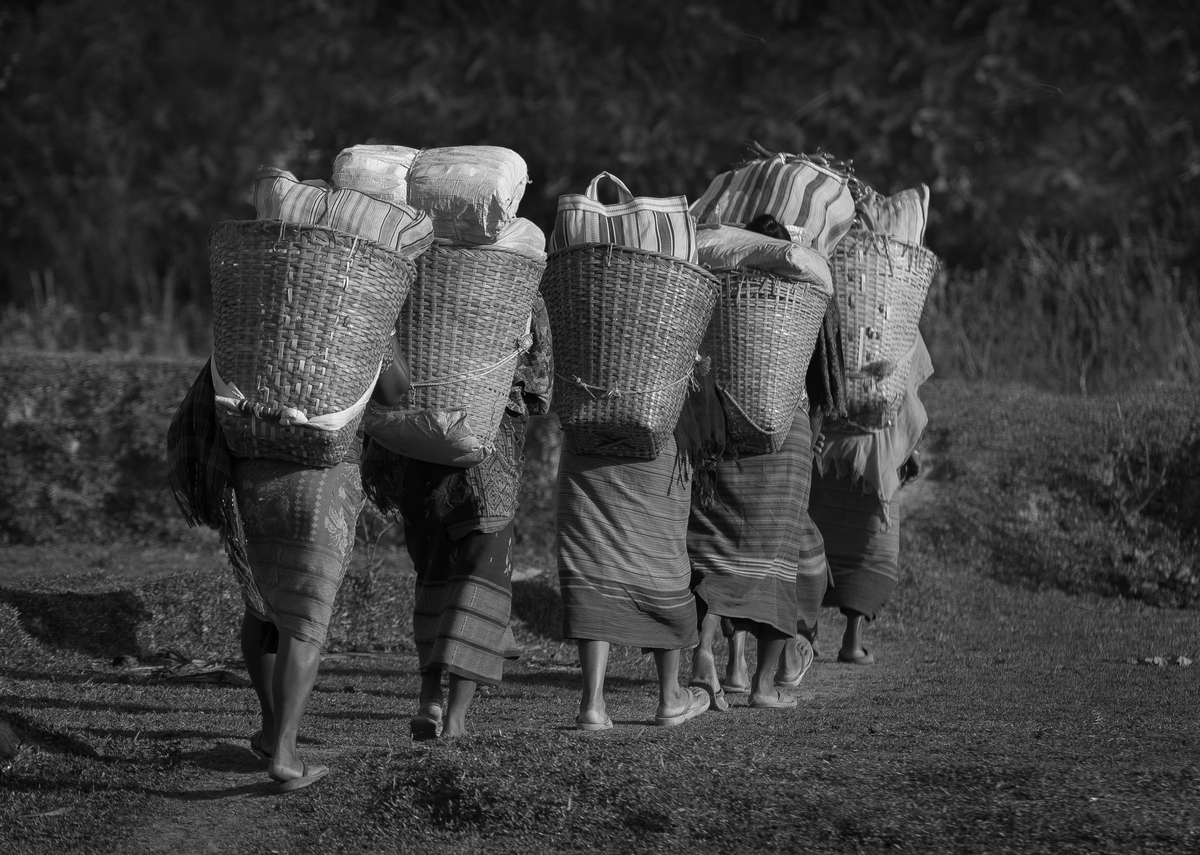October 31, 2025
Mawlynnong: Asia’s Cleanest Village – A Living Example of Harmony
CM Content Team


View all
140+
Resorts
October 31, 2025
CM Content Team
Amidst the rolling green hills of Meghalaya, there exists a village that feels almost too perfect to be real, Mawlynnong. Known for its pristine paths, flower-fringed homes, and gentle rhythm of life, this village is celebrated as Asia’s Cleanest. But beyond its postcard-worthy beauty lies a powerful philosophy rooted in community values, environmental mindfulness, and quiet pride. Mawlynnong isn’t just a place you visit; it’s a place that teaches. It shows how tradition and sustainability can walk hand in hand, creating not only a destination but a way of life worth emulating.
Mawlynnong sits in the East Khasi Hills of northeastern India, close to the India-Bangladesh border. It's a small settlement, home to about 900 people, yet its vision is grand. Known for its immaculate cleanliness and environmental ethics, this village has earned the title of Asia’s Cleanest Village.
The people here belong to the Khasi tribe and follow a matrilineal system where lineage and inheritance pass through the women. The cultural fabric is deeply rooted in community values, respect for nature, and sustainability. In this village, cleanliness is not just a practice; it’s an identity.

The village’s reputation is not based on a one-time campaign or a temporary external initiative; it’s the result of a long-standing culture of cleanliness, discipline, and shared responsibility, consistently upheld by the residents themselves.
Every household participates in maintaining cleanliness. Early each morning, villagers clean not only their homes but also the surrounding paths and public areas. Cleanliness is taught from childhood, becoming second nature to every generation.
Bamboo dustbins line every street and corner. Organic waste is turned into compost, while other waste is carefully managed. Plastic is avoided, and single-use materials are discouraged. Every action is a small contribution to a larger cause.
Unlike many rural areas where open defecation remains a concern, Mawlynnong ensures that every home has a functioning toilet. Sanitation is a priority, contributing significantly to public health and hygiene.
Plastic bags and non-biodegradable products are discouraged throughout the village. Residents rely on reusable or natural alternatives like baskets, cloth bags, and bamboo containers.
Mawlynnong’s charm lies not in extravagance but in its simple, harmonious existence. The village looks like a living postcard: stone pathways lined with flowers, traditional bamboo huts with neat gardens, and an overwhelming sense of order.
Walking through the village, you’ll see villagers tending their gardens, sweeping paths, and maintaining community spaces without being told to. Children play respectfully, elders relax in shaded porches, and life moves at a gentle, unhurried pace.

Though Mawlynnong is a small village tucked away in the hills, it’s remarkably rich in experiences, offering a blend of natural wonders, cultural depth, and quiet moments of reflection. Here are some of the most memorable attractions that leave a lasting impression on every visitor:
One of the most iconic natural wonders in the region is the Living Root Bridge. Formed by guiding the aerial roots of rubber trees across streams, these bridges are centuries-old and completely organic. Walking across one feels like entering a fairytale world.
A bamboo skywalk built high above the trees offers panoramic views of the village, surrounding forests, and even the plains of Bangladesh. The tower is simple but sturdy and gives visitors a breathtaking experience, especially during sunrise or sunset.
A curious natural formation where a massive boulder rests effortlessly atop a much smaller rock, creating a seemingly impossible balance. Locals consider it a sacred site, wrapped in legend and mystery, and it remains unmoved even by the region's strongest winds and heaviest rains.
An old, peaceful church built during colonial times, with simple architecture and stained-glass charm. Surrounded by lush greenery and flowering paths, it's not only a place of worship but a timeless symbol of the village’s quiet dignity and spiritual grace.

Mawlynnong’s cultural ethos is deeply aligned with sustainability. The Khasi people have lived in tune with nature for generations. Their homes are made of bamboo, gardens grow native plants, and even water is managed with care.
In this unique social structure, property and lineage pass through women. The youngest daughter typically inherits the family property, and the men support the family by moving into the women’s homes after marriage. This system promotes gender equality, financial independence, and social stability.
The village has a remarkably high literacy rate. Children are not only taught academic subjects in school but also essential life values, cleanliness, community participation, respect for elders, environmental responsibility, and a deep-rooted sense of pride in their culture and heritage.

Mawlynnong welcomes tourists with open arms, but on its own thoughtful terms. Unlike over-commercialised destinations that often lose their soul, the village preserves its authentic charm by encouraging mindful, eco-conscious travel that respects both nature and local culture.
Traditional meals include dishes like Jadoh (rice cooked with meat and spices), smoked pork infused with local herbs, fresh garden-grown vegetables, and tangy bamboo shoot pickles. Meals are typically organic, locally sourced, slow-cooked over wood fires, and rich in both flavour and cultural authenticity.
Visitors are expected to follow the village’s rules: no littering, no loud noise, no damage to public property, and no use of plastic. In return, they’re offered a peaceful, soul-soothing experience like no other.
The best time to explore Mawlynnong is from October to April, when the weather is cool, the skies are clear, and the village is lush and vibrant. This period is perfect for sightseeing, nature walks, and enjoying the scenic beauty without heavy rainfall.
Monsoon season (June to September) brings rich greenery and a magical misty charm, but also slippery paths and travel delays, ideal only for adventurous travellers.
As Mawlynnong’s fame grows, so do the challenges it faces. Despite its idyllic appearance, the village must navigate a changing world while preserving its essence.
The steady influx of tourists, while economically beneficial, can strain local resources, overwhelm infrastructure, and complicate waste management. Increased footfall may disturb the village’s calm environment and put pressure on its delicate ecosystem. The community must work even harder to maintain cleanliness and sustainability without compromising its peace and authenticity.
Unpredictable weather patterns, soil erosion, and extreme events like flash floods are becoming more frequent. These changes threaten local agriculture, damage footpaths and root bridges, and affect water availability. Sustainability efforts must now evolve into long-term climate resilience planning to protect both livelihoods and landscapes.
Tourism brings exposure, and with it comes the risk of cultural dilution. As visitors pour in with diverse behaviours and expectations, traditional customs may face pressure to change. Younger generations, attracted to urban opportunities and lifestyles, may begin to lose touch with their roots, putting centuries-old customs and community values at risk.
Mawlynnong isn’t just a clean village; it’s a living classroom that offers powerful lessons on how values, behaviour, and community can shape a better world. Its impact goes deeper than its beauty, revealing how thoughtful living can be both simple and transformational.
Cleanliness here is not a seasonal effort or a one-time event; it’s a way of life. It's not just about having a tidy space; it's about cultivating a mindset of responsibility and pride. Mawlynnong proves that when individuals take ownership of their surroundings, lasting transformation becomes not only possible but inevitable.
Sustainable living doesn’t require complex technology or massive funding. In Mawlynnong, everyday tools like bamboo bins, compost pits, rainwater harvesting, and age-old eco-friendly practices are used with deep intention. The village demonstrates that even the smallest communities can lead the way in sustainable development when values align with action.
Perhaps the most powerful lesson Mawlynnong offers is the strength of unity. Without needing strict enforcement or external authority, the villagers work together to uphold shared standards. Their collective spirit creates a sense of ownership, pride, and accountability. It's a reminder that real change often doesn’t come from the top; it begins with committed individuals coming together for the greater good.
What strikes visitors about Mawlynnong is not just the cleanliness, but the harmony. Every path, garden, and home speaks of pride. The people are warm, their values clear, and their lifestyle inspiring. Here, sustainability is not a policy; it’s a rhythm of life.
You leave Mawlynnong not just with photos but with a sense of possibility, a quiet push to live a little better, care a little more, and clean up a little sooner. It teaches that being in tune with nature and the people around us is the real luxury.

The nearest airport is in Shillong (Umroi Airport), about 100 km away, though flights are limited. A better option is Guwahati Airport, around 170 km from the village. From either airport, taxis or shared vehicles can take you to Mawlynnong via Shillong.
Mawlynnong is well-connected by road. It’s about a 3–4-hour drive from Shillong. You can hire a private cab or take a shared taxi from major points like Police Bazaar.
The closest major railway station is Guwahati, from where you can drive to Mawlynnong via Shillong.
Travel from Shillong to Mawlynnong, a scenic drive through the hills. Check into a local homestay and soak in the village’s peaceful atmosphere. Spend the afternoon exploring the clean lanes, bamboo houses, and vibrant gardens. Savour traditional Khasi meals and unwind as you adjust to the relaxed pace of village life.
After breakfast, visit the iconic Living Root Bridge, a natural marvel shaped by generations. Then head to the Sky View Tower for sweeping views of the village and nearby Bangladesh plains. Interact with the locals, learn about their eco-conscious lifestyle, and end the day with an evening of storytelling and local folklore.
Enjoy a quiet morning walk through the gardens and pathways. Visit the Balancing Rock, a curious natural formation. Later, head back to Shillong or continue your journey to nearby destinations like Dawki or Cherrapunji for more adventures.
Mawlynnong may be small in size, but it offers a big message to the world. It tells us that progress doesn’t always mean expansion; sometimes it means preservation. That growth doesn’t always require concrete; sometimes it requires roots, deep cultural roots that hold a village, a community, and an entire ethos in place.
If you're seeking more than just a travel destination, if you're looking for inspiration, learning, and a taste of a cleaner, kinder world, then Mawlynnong awaits.
Mawlynnong is a village in the East Khasi Hills of Meghalaya, near the India-Bangladesh border, about 90 km from Shillong.
It is renowned as Asia’s Cleanest Village for its exceptional community-led cleanliness, eco-friendly practices, and scenic beauty.
The ideal time to visit is from October to April, when the weather is cool and the surroundings are lush and vibrant.
You can reach Mawlynnong by road from Shillong (3–4 hours’ drive). The nearest airports are in Shillong and Guwahati.
The distance between Mawlynnong (Meghalaya) and Gangtok (Sikkim) is approximately 630–640 km by road, and travel typically involves a combination of road and possibly rail or air connections due to hilly terrain.
Le Vintuna Resort in Gangtok is a serene Club Mahindra property nestled along the Rani Chu River. It features charming Sikkimese architecture, with spacious rooms and balconies offering lush valley views. This resort in Gangtok provides a peaceful retreat with spa services, nature walks, and regional cuisine. Located slightly away from the city centre, it’s ideal for a relaxing getaway amidst nature.
Club Mahindra membership offers families the chance to enjoy 25 years of unforgettable holidays at over 140+ Club Mahindra resorts across India and abroad. With a wide range of destinations, from beaches to mountains, members can explore new places each year in comfort and style. The membership includes flexible plans, curated experiences, and access to exclusive activities that make every vacation memorable.
Mahindra Holidays & Resorts India Ltd. (MHRIL), a part of Leisure and Hospitality sector of the Mahindra Group, offers quality family holidays primarily through vacation ownership memberships and brings to the industry values such as reliability, trust and customer satisfaction. Started in 1996, the company's flagship brand ‘Club Mahindra’, today has over 300,000 members , who can holiday at 140+ resorts in India and abroad.
We use cookies to personalise content and to provide you with an improved user experience.By Continuing to browse this site you consent to the use of cookies.Please visit our cookie policy for further details.

Welcome to ClubMahindra.com In order to provide a personalised experience for you, we use cookies to enable some website functionality. Cookies help us see which articles most interest you; allow you to easily share articles on social media channels; permit us to deliver content personalised to your interests and locations; along with many other site benefits. For more information, please review our Cookie Policy
When you visit any website, it may store or retrieve information on your browser, mostly in the form of cookies. This information might be about you, your preferences or your device and is mostly used to make the site work as you expect it to. The information does not usually directly identify you, but it can give you a more personalized web experience. Because we respect your right to privacy, you can choose not to allow some types of cookies. Click on the different category headings to find out more and change our default settings. However, blocking some types of cookies may impact your experience of the site and the services we are able to offer.
Because we respect your right to privacy, you can choose not to allow some types of cookies and you have the right to withdraw your consent by send a mail to email id [email protected]
These cookies are essential in order to enable you to move around the site and use its features, such as accessing secure areas of the site. Without these cookies, services you have asked for cannot be provided.
These cookies allow us to employ data analytics so we can measure and improve the performance of our site and provide more relevant content to you. These cookies don't collect information that identifies a visitor down to an individual level that is available to us. These cookies are not passing personally identifiable information to any external third party other than in limited cases when we engage a service provider to act on our behalf but who is then unable to use the data for their own purposes.
Performance cookies are generally third-party cookies from vendors we work with or who work on our behalf that collect information about your visit and use of the Club Mahindra website, for instance which pages you visit the most often, and if you get error messages from web pages. These cookies don't collect information that identifies a visitor. All information these cookies collect is anonymous and is only used to improve your overall experience on how the website works. Third party vendors may have access to this data and may use it to improve their overall services and offerings.
Functionality cookies allow a site to remember choices you make (such as your user name, language or the region you are in) and provide more enhanced, personal features. These cookies cannot track your browsing activity on other websites. They don't gather any information about you that could be used for advertising or remembering where you've been on the Internet outside our site.
Third-party advertising and social media cookies are used to (1) deliver advertisements more relevant to you and your interests; (2) limit the number of times you see an advertisement; (3) help measure the effectiveness of the advertising campaign; and (4) understand people's behaviour after they view an advertisement. They are usually placed on behalf of advertising networks with the site operator's permission. They remember that you have visited a site and quite often they will be linked to site functionality provided by the other organization. This may impact the content and messages you see on other websites you visit. If you do not allow these cookies you may not be able to use or see certain these sharing tools content on our website.